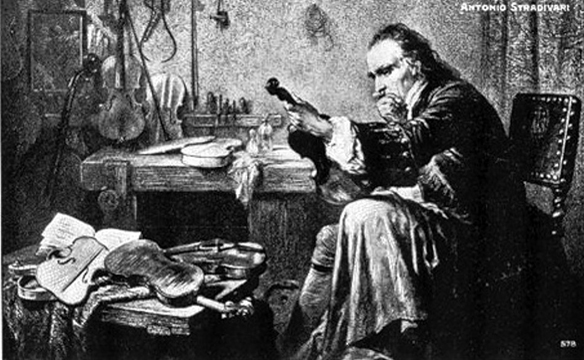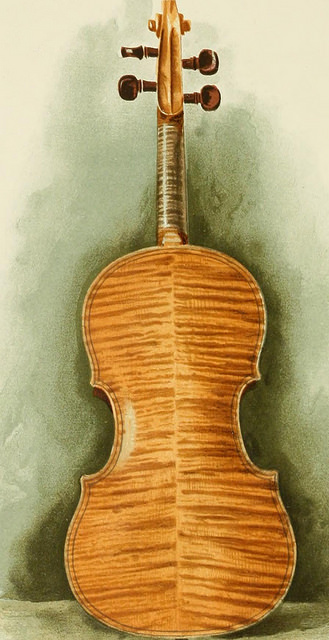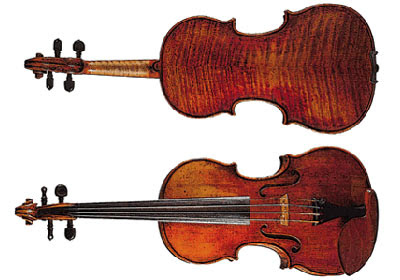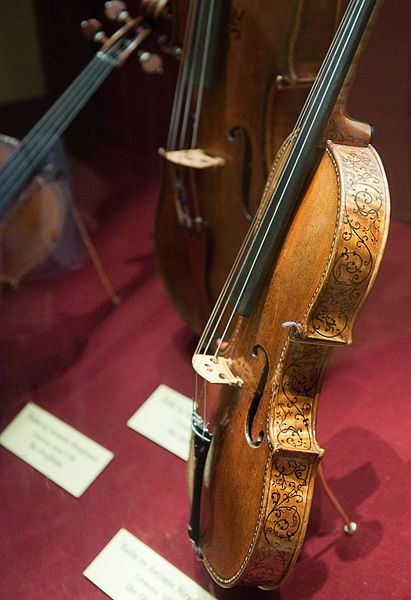Household name

If you’ve been in the violin game for any longer than sixty seconds, you’re likely to have heard about the fabled, mythical, and legendary Stradivarius violins.
These instruments are lauded as the pinnacle of musical engineering. They often sell for millions of dollars.
For the most part, only the most accomplished and revered violinists are invited to play these instruments and what’s more?
Recommended Reading: How To Buy A Violin
The players don’t even own them! They are loaned out to performers. These instruments are regularly kept in climate controlled chambers with armed security.
Yes. A suited, violin secret service agent is tasked with protecting these fine works of art.
Some of the most exquisite performances in history have taken place on Stradivarius violins and rave reviews have been written about them.
But…what makes them so special? Why are they arguably the most highly sought after instruments in the world?
There are many theories swirling around out there regarding this topic. Let’s take a quick look at the Stradivari family of instruments and see what we can discover.
Antonio who?

Antonio Stradivari is the woodworking and musical genius responsible for crafting these fine instruments.
In order to understand the instrument, lets first try to understand the maker.
Stradivari was born in 1644 (although there is some debate on this as it’s possible he was born in 1648).
He was born in Cremona, Italy, where he spent most of his life.
There is a great deal of evidence to support his being an apprentice to Nicolo Amati, the grandson of famed violin luthier(maker) Andrea Amati (credited with creating the first modern violin).
It was here that it is believed that Antonio learned his trade and to such an extent that he began surpassing the skill and prowess of many other violin makers in Italy.
By age sixteen, he was making his own violins, as well as working on the instruments of his master.
The first example of a violin with Stradivari’s name on it came in 1666, but it was still under the tutelage of his master.
These early violins maintained and followed much of the Amati style of instrument which tended to be somewhat smaller than modern instruments and didn’t produce quite as much volume.
A luthier with a vision

However, times were changing. Previously, venues for performance had been relatively small, but as concert halls grew in size, more volume was required of these violins.
This is especially true for the soloists. The demand was there. It is speculated that Stradivari saw this and decided to experiment with his design.
By 1680, he was producing slightly longer instruments and changing certain aspects of the depth of the violins.
He made them slightly more shallow on the inside, but longer overall.
He changed the overall curvature of the top and back of the violin and elongated the “F” holes.
It’s also speculated that he began testing new formulas for varnish. Stradivari was clearly not one to keep the status quo. He was a pioneer and it showed in his work.
Stradivari had a large family and his sons would eventually take over his business.
These two sons were Francesco and Omobono. They continued the tradition that their father had begun even unto his death in 1737.
That same year, Stradivari crafted what is believed to be his last violin, the “Swan, Chant du Cygne”.
Stradivari created over 1000 violins, violas and cellos.
He was wildly prolific with his production of fine instruments for that time period.
To this day, 650 are left and all are accounted for (sorry, folks, it’s not likely you’ll be finding the “lost Strad” any time soon).
But do Stradivarius violins really sound THAT good?

At the end of the day, anything sound is entirely personal opinion. Not all Stradivarius violins are created equal.
However, there are some undeniably positive characteristics about the sound produced by a Strad. The instruments are quite loud!
One of the things most of my students comment on is that my personal instrument produces more volume than theirs (no, I don’t have a Strad, it’s of the same design. But a loud, projecting violin is a desirable quality).
When you’re looking for an instrument, you don’t want one that makes you feel as if you have to force sound. With Strads, the volume produced is almost startling.
Additionally, good Stradivarius violins produce a tone that is clear and transparent.
It cuts through the mix to be heard and heard well. Strads have also shown themselves to consistently produce a well-balanced EQ.
This means that a good specimen will not make a sound that’s shrill and should have a good amount of low end and high end frequency production.
The sustain on a good Strad is the stuff that dreams are made of.
Ok, so what makes them so great?

There are a number of factors and variables said to be responsible for the superior sound produced by a Stradivarius.
As we’ve already discussed, Stradivari experimented with and settled on a longer violin that was thinner than previous designs.
It had a rigid top and back plate with a slightly different curve than the Amati tradition. This is one possible reason for the incredible sound they produce.
Another is that the varnish used to finish the violins was special.
This is entirely speculation because the formula for the varnish has not survived since Antonio’s passing.
However, some people believe it played a big role in how airy, open and organic these instruments sound.
Still, another theory involves “The Little Ice Age” that took place during this time period.
It was a time when the temperature became, and stayed, unusually cold. This produced trees that grew slower and therefore had much tighter rings and grain in it’s wood.
It is believed that this tight grain produced superior sound and tonal qualities.
Legend has it that Stradivari chose the wood for his trees from one specific place in his city’s nearby woods. Some people revere the location as hallowed ground.
Final thoughts

I propose that what makes a Stradivarius great is the use of all of the aforementioned methods.
When all of these variables are combined, it creates a superb sound. They deserve the reverence and respect they’ve been given.
These tonal considerations plus the fact that many of them are incredibly beautiful artistic wonders make a well-kept, well-produced Stradivarius violin worth millions of dollars.
